
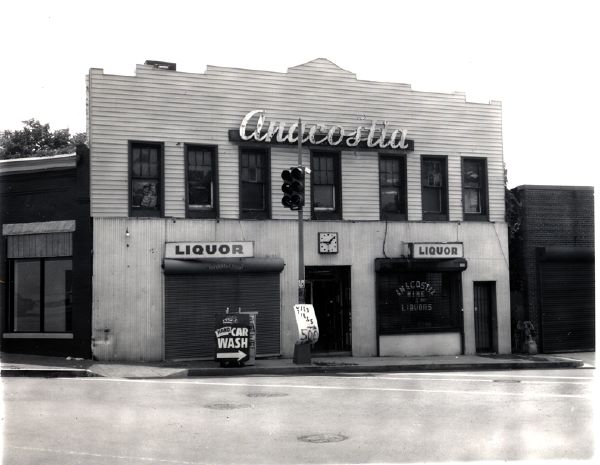
All Photographs + Text Copyright 2012 Christopher Keeley
Addiction and the Brain's Pleasure Pathway: Beyond Willpower
by Nora D. Volkow, M.D.
Summary
* Addiction can develop despite a person's best intentions and in spite of their strength of character.
* Repeated drug use disrupts complex but well balanced systems in the human brain.
* Many people are addicted to more than one substance, complicating their efforts to recover.
The human brain is an extraordinarily complex and fine-tuned communications network containing billions of specialized cells (neurons) that give origin to our thoughts, emotions, perceptions and drives. Often, a drug is taken the first time by choice to feel pleasure or to relieve depression or stress. But this notion of choice is short-lived. Why? Because repeated drug use disrupts well-balanced systems in the human brain in ways that persist, eventually replacing a person's normal needs and desires with a one-track mission to seek and use drugs. At this point, normal desires and motives will have a hard time competing with the desire to take a drug.
How Does the Brain Become Addicted?
Typically it happens like this:
* A person takes a drug of abuse, be it marijuana or cocaine or even alcohol, activating the same brain circuits as do behaviors linked to survival, such as eating, bonding and sex. The drug causes a surge in levels of a brain chemical called dopamine, which results in feelings of pleasure. The brain remembers this pleasure and wants it repeated.
* Just as food is linked to survival in day-to-day living, drugs begin to take on the same significance for the addict. The need to obtain and take drugs becomes more important than any other need, including truly vital behaviors like eating. The addict no longer seeks the drug for pleasure, but for relieving distress.
* Eventually, the drive to seek and use the drug is all that matters, despite devastating consequences.
* Finally, control and choice and everything that once held value in a person's life, such as family, job and community, are lost to the disease of addiction.
What brain changes are responsible for such a dramatic shift?
Research on addiction is helping us find out just how drugs change the way the brain works.
* Reduced dopamine activity. We depend on our brain's ability to release dopamine in order to experience pleasure and to motivate our responses to the natural rewards of everyday life, such as the sight or smell of food. Drugs produce very large and rapid dopamine surges and the brain responds by reducing normal dopamine activity. Eventually, the disrupted dopamine system renders the addict incapable of feeling any pleasure even from the drugs they seek to feed their addiction.
* Altered brain regions that control decisionmaking and judgment. Drugs of abuse affect the regions of the brain that help us control our desires and emotions. The resulting lack of control leads addicted people to compulsively pursue drugs, even when the drugs have lost their power to reward.
The disease of addiction can develop in people despite their best intentions or strength of character. Drug addiction is insidious because it affects the very brain areas that people need to "think straight," apply good judgment and make good decisions for their lives. No one wants to grow up to be a drug addict, after all.
Co-occurring Addictions: Compounding Complexities
It is not unusual for an addicted person to be addicted to alcohol, nicotine and illicit drugs at the same time. Addiction to multiple substances raises the level of individual suffering and magnifies the associated costs to society. No matter what the addictive substance, they all have at least one thing in common - they disrupt the brain's reward pathway, the route to pleasure.
What is the best way to treat people who are addicted to more than one drug?
* Medications. In some cases, medications developed for one addiction have proven useful for another. For example, naltrexone, which can help former heroin users remain abstinent by blocking the "high" associated with heroin, has been found to be effective in treating alcoholism.
* Behavioral therapy or other psychotherapy. Behavioral therapies do not need to be specific to one drug and can be adapted to address use of multiple or different drugs. It is the disease of addiction that the therapy addresses.
* Combined medications and behavioral therapy. Research shows that this combination, when available, works best.
* Multipronged approach. Treatment for multiple addictions should be delivered at the same time. This is especially true because there are always triggers, such as trauma, depression, or exposure to one drug or another, that can put the recovering addict at risk for relapse. In addition, treatment must consider all aspects of a person - their age, gender, life experiences - in order to best treat their drug addiction. Although the type of treatment may differ, it should always strive to address the entire person through a multipronged approach that tackles all co-occurring conditions at once.
Relapse: Part of Addiction as a Chronic Disease
Despite the availability of many forms of effective treatment for addiction, the problem of relapse remains the major challenge to achieving sustained recovery. People trying to recover from drug abuse and addiction are often doing so with altered brains, strong drug-related memories and diminished impulse control. Accompanied by intense drug cravings, these brain changes can leave people vulnerable to relapse even after years of being abstinent. Relapse happens at rates similar to the relapse rates for other well-known chronic medical illnesses like diabetes, hypertension and asthma.
How is relapse to drug abuse similar to what happens with other chronic diseases?
* Just as an asthma attack can be triggered by smoke, or a person with diabetes can have a reaction if they eat too much sugar, a drug addict can be triggered to return to drug abuse.
* With other chronic diseases, relapse serves as a signal for returning to treatment. The same response is just as necessary with drug addiction.
* As a chronic, recurring illness, addiction may require repeated treatments until abstinence is achieved. Like other diseases, drug addiction can be effectively treated and managed, leading to a healthy and productive life.
To achieve long-term recovery, treatment must address specific, individual patient needs and must take the whole person into account. For it is not enough simply to get a person off drugs; rather, the many changes that have occurred - physical, social, psychological - must also be addressed to help people stay off drugs, for good.
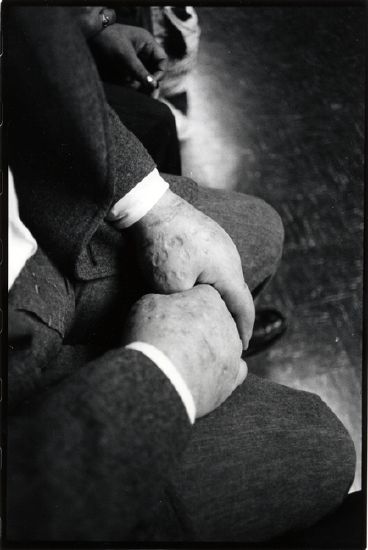
- Addiction and the Brain's Pleasure Pathway: Beyond Willpower. Eventually, the drive to seek and use the drug is all that matters, despite devastating consequences.
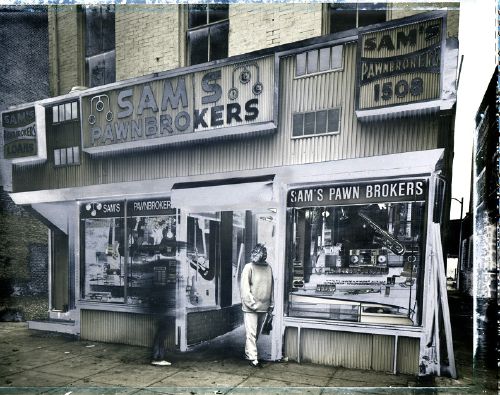
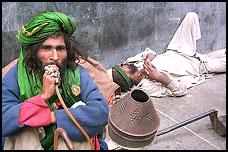
Heroin (H., Smack, Brown)
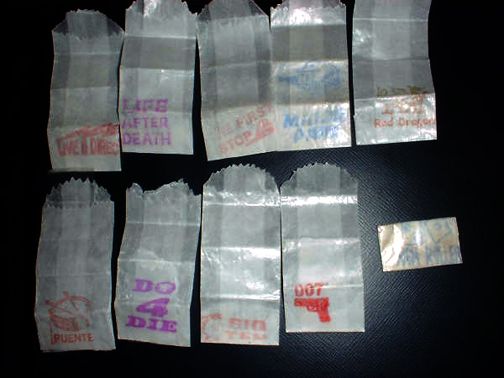
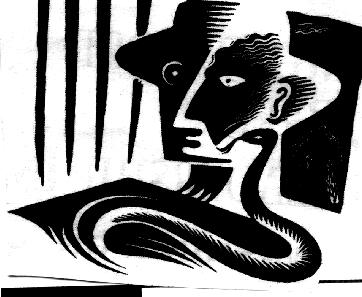
Photographic Memories
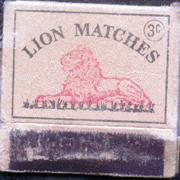
Collage DaDa
Art
In the treatment of alcohol abuse, which afflicts about 14 million Americans --
one in every 13 adults. Alcohol abusers are defined as men who have five or more drinks per day
and women who have four or more drinks each day.
Alcoholism is not a homogenous disease, so there is no magic bullet out there to treat it.
There is a biological component and a psychological component and a cultural component and a social component,
and they vary from individual to individual.
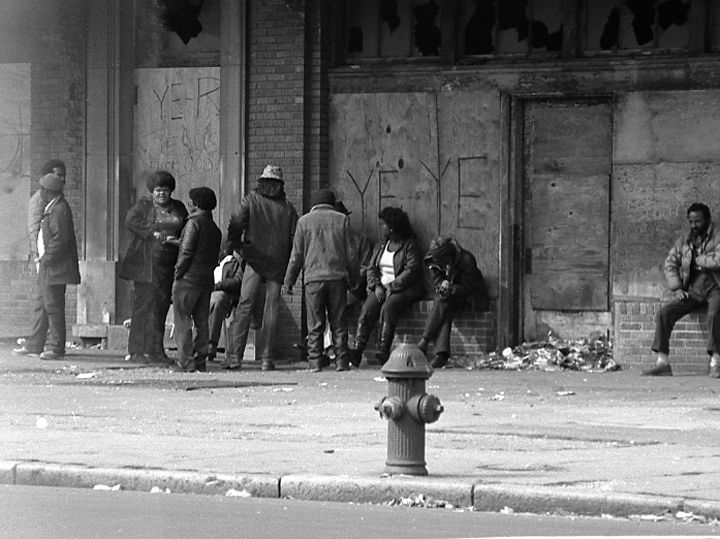
- Drink Drive
- Drive Drink
- The Disease of Addiction

Wellconal was my drug of choice

Rest in Loving Peace
our children
Hillbrow with its corruption and violence, slum landlords, crooked police, strip-joints and night clubs,
drug-lords, pimps, brothels and massage parlours, prostitution, sex buyers, and overall decadence have
become the burial grounds for our children.
Some of our children died of Wellconal (pinks) OD, others from Heroin or more violently from crack cocaine rocks OD's.

Many deaths were as the result of continued physical and drug abuse - the girls died of
septicemia, thrombosis, heart failure, pneumonia, malnutrition, AIDS. As the victims of sexual perversions
many girls were raped, mutilated and murdered. With their miserable lives becoming unbearable -
some of
our heartbroken children chose the only way out left for them, they would cop out by committing suicide.
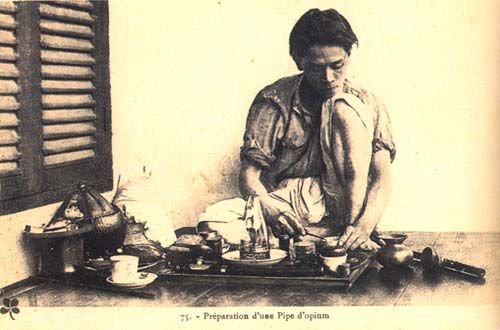
There is always a need for intoxication:
China has
opium, Islam has hashish, the West has woman.
Andre Malraux
(1901-1976)
MAN'S FATE

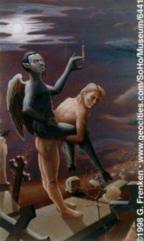
Paradise Life
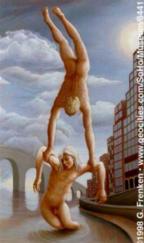
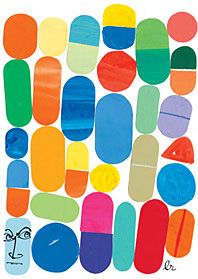
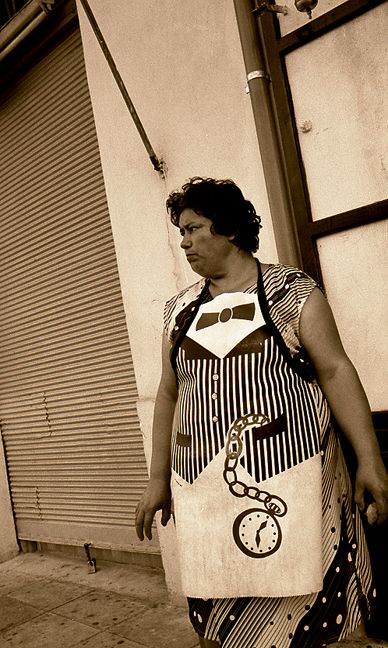
A Day in the life of an addict
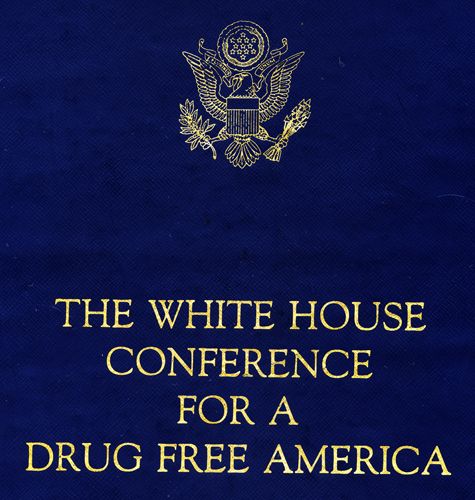
White House Conference for a Drug free America - excluding Alcohol and Tobacco
-
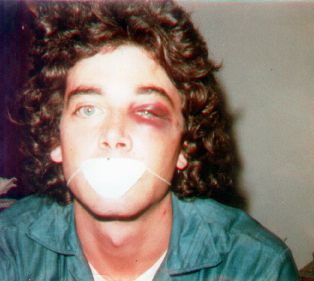
Malawi Gold Cob

Drug addiction
According to federal government studies, 15 million Americans are addicted to alcohol, 12 million to other drugs.
The marketplace presents an ever-changing array of chemicals people can abuse.
Yet alcoholism is and always has been the No. 1 problem people seek treatment for.
In the early 80's, Valium was the second most abused drug, then cocaine surpassed it. Now opiates such as Vicodin, Percoset and OxyContin, usually legally prescribed, are in second place.
- Cocaine and Crack
- I know someone who is using drugs - what now?
- gamma
hydroxybutyrate, more commonly known as GHB
Recovery is also about the spirit, about dealing with that hole in the soul.
was born with what I like to call a hole in my soul.. . .A pain that came from the reality that I just wasn't good enough.
That I wasn't deserving enough. That you weren't paying attention to me all the time. That maybe you didn't like me enough.
is true for those who are genetically predisposed. We know from twin and family studies that about 50 percent of a person's vulnerability to addiction is genetic.
millions of addicts around the world have recovered without the help of medication.
the fact is that today 12-step treatment is still the best treatment there is
- Amphetamines (Speed, Whizz)
- MDMA (Ecstasy)
Ecstasy, popular among teenagers and young adults who attend rave parties, leads to the destruction of neurons in the brain.
Repeated users of the drug develop symptoms resembling those of Parkinson's and Alzheimer's diseases
- MDMA / ECSTASY . not for chemists - some drug slang
- Psilocybin (Magic Mushrooms)
- LSD Blotter Art Gallery -
http://www.erowid.org/chemicals/lsd/lsd_images_gallery1.shtml
- art that gets printed on LSD tabs.
This site showcases blotter art of
everything from album covers to cartoon characters. Even Alice in
Wonderland has her own tab.
- wellconal
Addiction is one of the nation's biggest public health problems, costing $524 billion (including lost wages and costs to the public health care and criminal justice systems) each year.
The majority of the estimated 20 million alcoholics and drug addicts in America (and millions more compulsive gamblers, overeaters and sex addicts,
if you accept an expanded understanding of addiction) never get help.
Those who do often relapse repeatedly, sometimes returning to treatment centers 5, 10 or 15 times (if they don't die first).
And many of those who"recover simply trade one addiction for another addicts call this dance switching seats on the Titanic.
![[INLINE:burntime]](burntime.jpg)
burntime
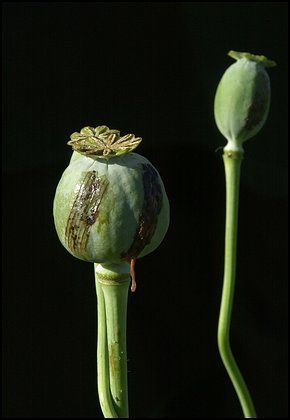
The brownish gum that bleeds out of a poppy plant is raw opium.
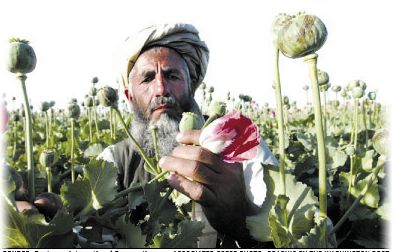

Fire Barrel
About 60,000 District residents, or 12 percent of the population, have a substance abuse problem, according to the D.C. Addiction Prevention and Recovery Administration. Partly as a result, police say, liquor stores, food carryouts and gas stations stock items used in the illegal drug trade, including tiny rose vases that double as crack pipes, rolling papers used to smoke marijuana and small plastic bags used to package drugs.
And signs of progress are popping up. Next to the cooler of Wild Irish Rose and Thunderbird malt liquors at King's Mini Market in Anacostia, for instance, is a sign alerting patrons that the store no longer sells crack pipes and rolling papers.
- Otherwise known as Pinks, Inxs or Inkiltins, Wellconal is a Schedule-7 prescription painkiller. It contains dipipanone, which is a derivative of methadone and a potent analgesic (pain relieving) drug.
dealers peddling heroin that they were calling "drop dead," "lethal injection," and "killer instinct" spread,
Like the regulars at Harry Hope's saloon in The Iceman Cometh, she'd reached the late stage of alcoholism where no matter how much she drank, she couldn't get drunk anymore.
- anti-smoking stamps
addiction whether to alcohol, to drugs or even to behaviors like gambling appears to be a complicated disorder affecting brain processes
responsible for motivation, decision making, pleasure seeking,
inhibitory control and the way we learn and consolidate information and experiences.
High Culture
the Fentanyl that has killed more than 60 heroin users in the Chicago area.
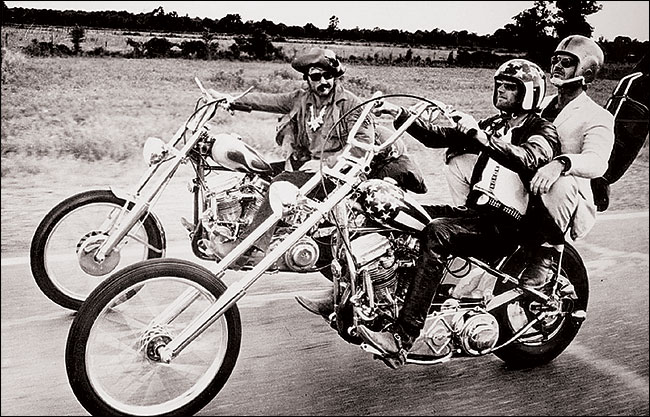
Copyright Columbia Pictures, Easy Rider had an enromous influence on an
juvenile delinquent addict dreaming of growing up becoming an outlaw.
the making of Easy Rider
dont use
you're told that addiction is a disease that wants you dead, and it will go after you unless you use the tools you learn in the program
a hallucination
Before Prohibition: Images from the preprohibition era
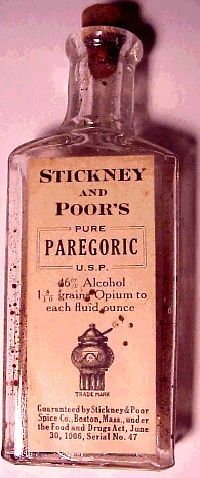
Illicit Drug Index
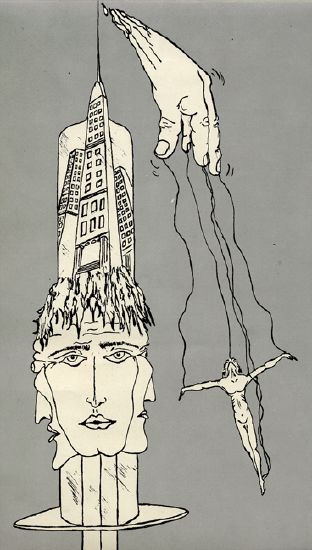
- blotterbarn art in lsd
- LSD „ My Problem Child
- The plant Papaver Somniferum, aka the Opium Poppy.
- Crystal Meth Anonymous of Washington DC
- Crsytal Meth Anonymous
- How cocaine is made
- Do It Now Organization
- Stop Drugs methcrisis
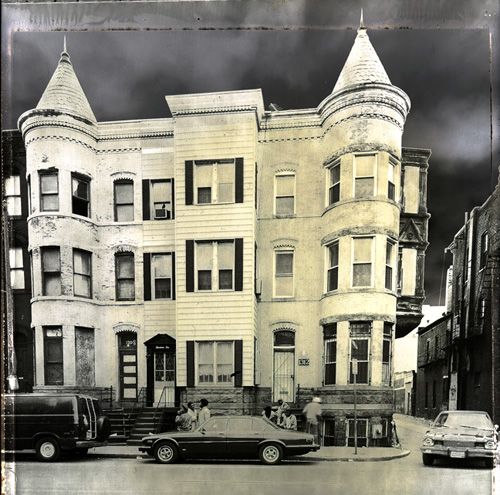
- FUTURE OPIOIDS
- Ed 's Parents were bikers.
Ed says - my mother's on Methadone, my father is incarcerated in prison, I graduated from highschool and I grew up in a barn without electric and water.
Ed's left index finger has Gangrene because he hit an artery while injecting Heroin into his arm.
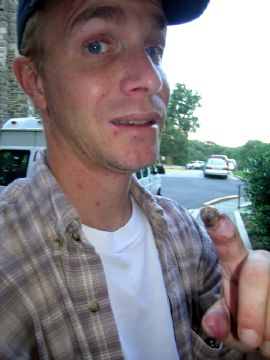
Dont Shoot Dope
- Drug Guide ( Good Drug Guide ) Druggies Paradise
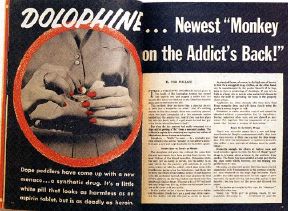
dreamtime
OxyContin is a synthetic, time-released pill similar to morphine, and its benefits have been widely praised by terminal cancer patients and others with severe and intractable pain.
But the pills contain large amounts of the pure drug oxycodone, which abusers seek for its heroin-like high. They crush the pills and then snort or inject them.
Abuse of OxyContin has sparked what some authorities call an epidemic in several Appalachian states over the past few years, and the associated addictions and crime have migrated to suburban and urban areas.
OxyContin is a long-lasting version of oxycodone, a narcotic considered important therapy for many patients suffering chronic, moderate to severe pain from illnesses such as cancer. The tablet, when swallowed whole, provides 12 hours of relief.
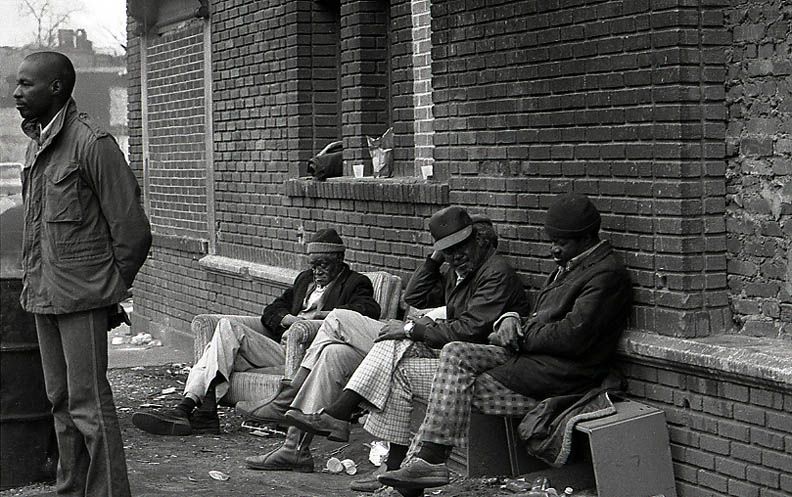
No Job Heroin Nod
But the drug can produce a quick and potentially lethal high if it is chewed, snorted or injected. It has been linked to more than 100 deaths and bears the government's strongest warning label, which says the drug may be as addictive as morphine.
- Mandrax
PCP, the full name of which is phencyclidine, can produce hours of a frenzied high. The drug has unpredictable effects, and people under its influence have been known to behave erratically, from stripping off their clothing to killing with little or no provocation.
A Day in the life of an addict
- Fry: "A Study of
Adolescents Use of Embalming Fluid with Marijuana and Tobacco
The drug PCP was popular in the District in the 1970s and '80s, when it was known as Love Boat or Buck Naked,
because many of its users shed their clothes while high. But the drug's popularity in Washington faded as crack cocaine took over.
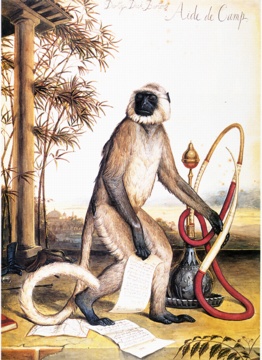
Dagga

Signs and symptoms of drugging
Is something wrong?
Look out for the signs and symptoms of substance abuse:
Disinterest in previously important activities
Change in appetite and eating patterns
Withdrawal from family
Secretiveness about friends, lying
Lack of motivation
New friends
Needing abnormal amounts of money, stealing
Drug paraphernalia
Lack of energy, drop in attention span
Changes in values and beliefs
Period of unexplained absence from home
Deterioration in school marks
Short term memory loss
- Cannabis
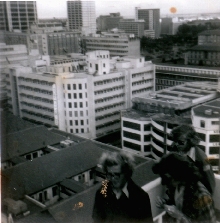
Juvenile Delinquency
Jay, Robbie and Chris rolling a Joint of Ugandian Bhangi
1973 on the roof of the Narobi Hilton in Kenya.
Chris got clean ten years later. Robbie and Jay are most likely dead or rotting in a jail somewhere.
For their children, smoking marijuana is not a harmless rite of passage but rather a dangerous game of Russian roulette.
the number of children and teenagers in treatment for marijuana dependence and abuse has jumped 142 percent since 1992,
and the number of teen emergency room admissions in which marijuana is implicated is up almost 50 percent since 1999.
Though alcohol remains by far the teen substance of choice, teens are three times likelier to be in treatment for marijuana than for alcohol
(and six times likelier to be in treatment for marijuana than for all other illegal drugs combined).
Meth FaQ
As has been true of tobacco since the 1960s, we've learned a lot about the dangers of marijuana since the 1970s.
The drug adversely affects short-term memory, the ability to concentrate and motor skills.
Recent studies indicate that it increases the likelihood of depression, schizophrenia and other serious mental health problems.
Nora Volkow, director of the National Institute on Drug Abuse, has repeatedly expressed concern about the adverse impact of marijuana on the brain,
a matter of particular moment for youngsters whose brains are still in the development stage.
Volkow has stated: There is no question marijuana can be addictive; that argument is over.
The most important thing right now is to understand the vulnerability of young, developing brains to these increased concentrations of cannabis.
- Lysergic Acid Diethylamide (LSD)
- Blotter Barn | LSD Blotter Art Archive
- the Lycaeum - Entheogenic Database & Community
Psilocybin, the active ingredient of "magic mushrooms," expands the mind. After a thousand years of use, that's now scientifically official.
The chemical promoted a mystical experience in two-thirds of people who took it for the first time, according to a new study.
One-third rated a session with psilocybin as the "single most spiritually significant" experience of their lives. Another third put it in the top five.
It confirms what both shamans and hippies have long said -- taking psilocybin is a scary, reality-bending and occasionally life-changing experience.
Of the 36 people, 22 had a "complete" mystical experience as judged by several question-based scales used for rating such experiences.
Two-thirds judged it to be among their top five life experiences, equal to the birth of a first child or death of a parent.
Two months after a session, the people who had taken psilocybin reported small but significant positive changes in behavior and attitudes compared with those who had taken Ritalin.
-

Laos - The Opium Addict
There is no single known cause of alcoholism, but the researchers wrote that about two-thirds of alcohol dependence could be attributed to genetic factors and one-third to environmental causes like stress or emotional problems. Men and women are equally affected, and age does not appear to affect prognosis.
- The Montana Meth Project
Crack users and heroin users are so disorganized and get in these frantic binges, they're not going to sit still and do anything in an organized way for very long,
Dr. Rawson said.
Meth users, on the other hand, that's all they have, is time.
The drug stimulates the part of the brain that perseverates on things. So you get people perseverating on things, and if you sit down at a computer terminal you can go for hours and hours.
For example, crack cocaine or heroin dealers usually set up in well-defined urban strips run by armed gangs,
which stimulates gun traffic and crimes that are suited to densely populated neighborhoods,
including mugging, prostitution, carjacking and robbery.
Because cocaine creates a rapid craving for more, addicts commit crimes that pay off instantly, even at high risk.
Methamphetamine, by contrast, can be manufactured in small laboratories that move about suburban or rural areas,
where addicts are more likely to steal mail from unlocked boxes.
Small manufacturers, in turn, use stolen identities to buy ingredients or pay rent without arousing suspicion.
And because the drug has a long high, addicts have patience and energy for crimes that take several steps to pay off.
- Solvents (Glue, Gas)
- Nitrites (Poppers)
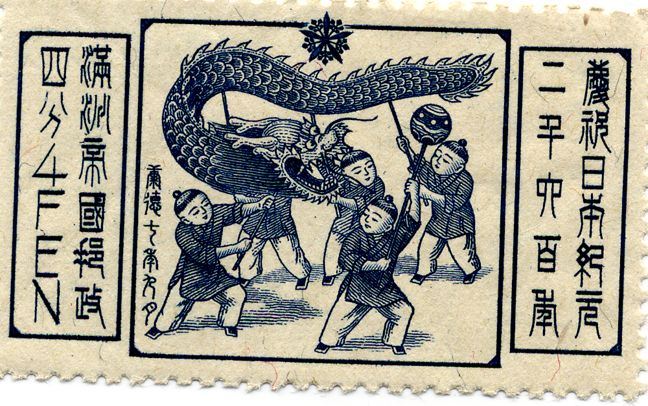

Japanese advertisements (1956-2003) for psychiatric drugs
- The Methadone Perspective from 16 Recovering Addicts
The overdoses took place in Minnesota, Texas and Florida and were blamed on 1,4-butanediol, which turns to GHB in the body.
Butanediol is used as an industrial solvent and is also included in supplements sold under names such as Thunder
Nectar, InnerG and Zen.
Butanediol can cause dizziness, seizures and coma, and can slow breathing to dangerous levels. It can intensify alcohol's
effects and is also said to be more dangerous when taken with other depressant drugs.
GHB, or gamma hydroxybutyrate, is sometimes used at all-night rave parties. It is known as a date rape drug for its
ability to incapacitate people and leave them vulnerable to sexual assault.
The Substance Abuse and Mental Health Services Administration (SAMHSA)
1-800-662-HELP
1-800-662-9832 (Espanol)
1-800-228-0427 (TDD)
- Welcome to D-2K
The site that helps you wise up about drugs
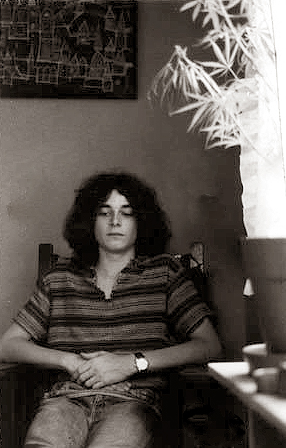
- 15 To Life:
How a Prisoner of the War on Drugs Painted His Way to Freedom
A powerful memoir of one man's struggle for freedom,
15 to Life tells in vivid prose the story of Anthony Papa, a painter and a casualty of the War on Drugs.
- chris cozzone
is a photojournalist specializing in
street photography, criminals, prisons, gangs, prostitutes & boxing.
- Ketamine can reproduce all features of the NDE,
including buzzing/ringing/whistling sounds at the
beginning, travel through a dark tunnel into light at
high speed, the conviction that one is dead,
'telepathic communion with God', intense visions, life
reviews, out-of-body experiences, mystical states and
transpersonal phenomena. Thus ketamine can release the
Bardo Body from its Earthly mooring, to transcend the
limits of time and space as described in The Tibetan
Book of the Dead.
In both a near-death experience and a ketamine
experience, there may be analgesia (inability to feel
pain), apparent clarity of thought, a perception of
separation from the body (an out-of -body experience),
visions of landscapes, beings such as 'angels',
'beings of light', people including partners, parents,
teachers and friends (who may be alive at the time),
and religous and mythical figures. There may be
interaction with these figures, who are sometimes
(although not always) perceived as helpful. Euphoria
is common.
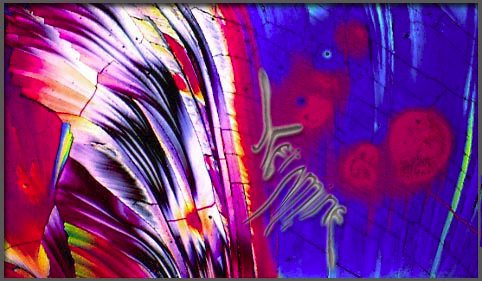
Intro:
So you think you've tripped hard
Speedlore and Methology: Part II
The American Speedfreak is a lost soul. We know how to have fun between the first ether gasp and locking ourselves in the closet. A twisted wisdom creeps into those of us who manage to survive, a sort of collective unconsciousness, an unspoken Crankster ideology:
It's time to get some sleep when:
You're out of crank
Your face is bouncing off the table
Your veins have completely disappeared beneath pasty goose flesh
Your shoes don't fit anymore
24 simultaneous projects have stalled for lack of floor space suddenly
everyone is a cop
You've just set yourself on fire, again
You're nodding out...
into glassware
15 minutes after shooting a 1/4g
at stoplights
in mid-sentence
in mid-shot
in mid-fuck
(Speed Phreak)
- methamphetamine.com

Methamphetamine -- a powerful stimulant that impairs the central nervous system -- is the latest drug scourge to capture the nation's attention.
Known as the poor man's cocaine because of its cheap price and lengthy high, meth has long been a drug of choice among low-income addicts. But what used be an isolated problem in pockets of the West and in rural areas has become a top priority for law enforcement officials across the Southwest and Midwest, where meth production and use has moved from biker gangs to mainstream.
According to a 2002 National Survey on Drug Use and Health report, 12.4 million Americans ages 12 and older had tried methamphetamine at least once, with most users between 18 and 34. Last year, more than 3,000 children were rescued during seizures of more than 15,000 meth labs nationwide, according to the federal Office of National Drug Control Policy.
- Methylphenidate (ritalin)
- Street Drug Slang
- Drug Slang
- Drug Street Slang
Teenagers intentionally inhale the vapors of common household products such as hair spray, shoe polish and glue each year.
The health effects can include brain and neural damage, convulsions, deafness, impaired vision, depressed motor skills and death. The social effects, surveys show, include behavioral problems, other drug use and delinquent behavior.
Inhalants commonly sniffed, or "huffed," by children as young as 8 include gasoline and lighter fluid, spray paints, cleaning fluids, paint thinners and other solvents, degreasers, correction fluids, hair sprays and odorizers.
- Personal Recovery
- chasing the dragon
Slang term for a way of smoking heroin, which usually involves placing
powdered heroin on foil and heating it from below with a lighter.
The heroin turns to a sticky liquid and wriggles around like a Chinese dragon, hence the name. Fumes are given off and are inhaled, sometimes thorough a rolled up newspaper, magazine or tube.
Tonight when I chase the dragon / The water will change to cherry wine / And the silver will turn to gold
- Time Out Of Mind
- Crystal Meth Anonymous of Washington DC
- Concerning Behaviors to Look for in an Adolescent Who Might be Using Drugs
- Flashlight Artist
- cannabis
- Stop Drugs.org - Internet Resouces
- Families and
Friends
for Drug Law
Reform
committed to preventing tragedy that
arises from illicit drug use
Addiction Treatment Forum

There is no test for schizophrenia,
and doctors make a diagnosis based on symptoms.
Here is a list of some of the early warning signs of schizophrenia
- Hearing or seeing something that isn't there.
- Constant feeling of being watched.
- Peculiar or nonsensical way of speaking or writing.
- Feeling of indifference about important situations.
- Deterioration of academic or work performance.
- Changes in personal hygiene and appearance.
- Personality changes.
- Increasing withdrawal from social situations.
- Irrational, angry or fearful response to loved ones.
- Inability to sleep or concentrate.
- Inappropriate or bizarre behavior.
- Extreme preoccupation with religion or the occult.
The first step in preventing suicide is to identify and understand the risk factors. A risk factor is anything that increases the likelihood that persons will harm themselves.
However, risk factors are not necessarily causes. Research has identified the following risk factors for suicide (DHHS 1999):
* Previous suicide attempt(s)
* History of mental disorders, particularly depression
* History of alcohol and substance abuse
* Family history of suicide
* Family history of child maltreatment
* Feelings of hopelessness
* Impulsive or aggressive tendencies
* Barriers to accessing mental health treatment
* Loss (relational, social, work, or financial)
* Physical illness
* Easy access to lethal methods
* Unwillingness to seek help because of the stigma attached to mental health and substance abuse disorders or suicidal thoughts
* Cultural and religious beliefs for instance, the belief that suicide is a noble resolution of a personal dilemma
* Local epidemics of suicide
* Isolation, a feeling of being cut off from other people
STREET SLANG
Hillbrow with its corruption and violence, slum landlords, crooked police, strip-joints and
night clubs, drug-lords, pimps, brothels and massage parlours, prostitution, sex buyers,
and overall decadence have become the burial grounds for our children. Some of our children died of Welconal (pinks) OD,
others from heroine or more violently
from crack cocaine (rocks) OD's.
Many deaths were as the result of continued physical and drug abuse - the girls died of septicaemia, thrombosis, heart failure, pneumonia,
malnutrition, Aids, etc.
As the victims of sexual perversions many girls were raped,
mutilated and murdered. With their miserable lives becoming unbearable - some of our
heartbroken children chose the only way out left for them -
they would cop-out by
committing suicide.Both Welconol and Mandrax have been widely abused in the sex work community.
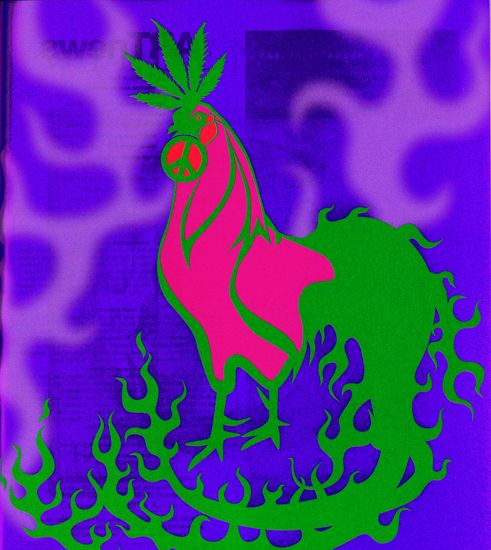
- Drug addiction
- ADDICT:
out of the dark and into the light
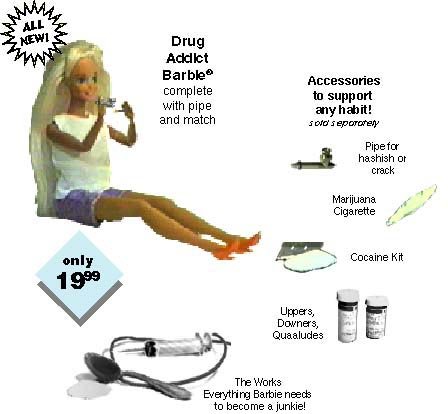
- Daily DreamTime
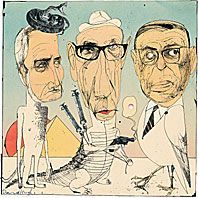
- Art Resume
- Work Resume
- Photographic Memories
- Addict Review
- Sifnos Review
- Samantha's story
super cool links
Chris keeley's resume
secret surrealist society artwork
dead friends
newest sss art
Chris keeley's art galleries
rationalize,minimize and denial statements
the Intervention Organization
five and ten press - consulting iconoclast
Chris Keeley's Social Documentary Photography
activism
Art links
Big brother
Blinded by Science
Darkside / Gothic
Dharma Road
G E E K
Maul
Music
Pirate
radio
W E I R D O
What's Mailart
Mailart List
Scanner Links
Drugs
Photographs
Art
Out of the Dark
Art
In to the Light
Art
Collage DaDa
Art

Send me email!
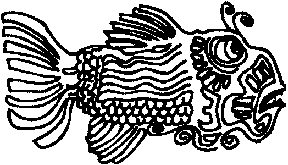
Return to Intervention Organization


All Photographs + Text Copyright 2012 Christopher Keeley
Addiction and the Brain's Pleasure Pathway: Beyond Willpower
by Nora D. Volkow, M.D.
Summary
* Addiction can develop despite a person's best intentions and in spite of their strength of character.
* Repeated drug use disrupts complex but well balanced systems in the human brain.
* Many people are addicted to more than one substance, complicating their efforts to recover.
The human brain is an extraordinarily complex and fine-tuned communications network containing billions of specialized cells (neurons) that give origin to our thoughts, emotions, perceptions and drives. Often, a drug is taken the first time by choice to feel pleasure or to relieve depression or stress. But this notion of choice is short-lived. Why? Because repeated drug use disrupts well-balanced systems in the human brain in ways that persist, eventually replacing a person's normal needs and desires with a one-track mission to seek and use drugs. At this point, normal desires and motives will have a hard time competing with the desire to take a drug.
How Does the Brain Become Addicted?
Typically it happens like this:
* A person takes a drug of abuse, be it marijuana or cocaine or even alcohol, activating the same brain circuits as do behaviors linked to survival, such as eating, bonding and sex. The drug causes a surge in levels of a brain chemical called dopamine, which results in feelings of pleasure. The brain remembers this pleasure and wants it repeated.
* Just as food is linked to survival in day-to-day living, drugs begin to take on the same significance for the addict. The need to obtain and take drugs becomes more important than any other need, including truly vital behaviors like eating. The addict no longer seeks the drug for pleasure, but for relieving distress.
* Eventually, the drive to seek and use the drug is all that matters, despite devastating consequences.
* Finally, control and choice and everything that once held value in a person's life, such as family, job and community, are lost to the disease of addiction.
What brain changes are responsible for such a dramatic shift?
Research on addiction is helping us find out just how drugs change the way the brain works.
* Reduced dopamine activity. We depend on our brain's ability to release dopamine in order to experience pleasure and to motivate our responses to the natural rewards of everyday life, such as the sight or smell of food. Drugs produce very large and rapid dopamine surges and the brain responds by reducing normal dopamine activity. Eventually, the disrupted dopamine system renders the addict incapable of feeling any pleasure even from the drugs they seek to feed their addiction.
* Altered brain regions that control decisionmaking and judgment. Drugs of abuse affect the regions of the brain that help us control our desires and emotions. The resulting lack of control leads addicted people to compulsively pursue drugs, even when the drugs have lost their power to reward.
The disease of addiction can develop in people despite their best intentions or strength of character. Drug addiction is insidious because it affects the very brain areas that people need to "think straight," apply good judgment and make good decisions for their lives. No one wants to grow up to be a drug addict, after all.
Co-occurring Addictions: Compounding Complexities
It is not unusual for an addicted person to be addicted to alcohol, nicotine and illicit drugs at the same time. Addiction to multiple substances raises the level of individual suffering and magnifies the associated costs to society. No matter what the addictive substance, they all have at least one thing in common - they disrupt the brain's reward pathway, the route to pleasure.
What is the best way to treat people who are addicted to more than one drug?
* Medications. In some cases, medications developed for one addiction have proven useful for another. For example, naltrexone, which can help former heroin users remain abstinent by blocking the "high" associated with heroin, has been found to be effective in treating alcoholism.
* Behavioral therapy or other psychotherapy. Behavioral therapies do not need to be specific to one drug and can be adapted to address use of multiple or different drugs. It is the disease of addiction that the therapy addresses.
* Combined medications and behavioral therapy. Research shows that this combination, when available, works best.
* Multipronged approach. Treatment for multiple addictions should be delivered at the same time. This is especially true because there are always triggers, such as trauma, depression, or exposure to one drug or another, that can put the recovering addict at risk for relapse. In addition, treatment must consider all aspects of a person - their age, gender, life experiences - in order to best treat their drug addiction. Although the type of treatment may differ, it should always strive to address the entire person through a multipronged approach that tackles all co-occurring conditions at once.
Relapse: Part of Addiction as a Chronic Disease
Despite the availability of many forms of effective treatment for addiction, the problem of relapse remains the major challenge to achieving sustained recovery. People trying to recover from drug abuse and addiction are often doing so with altered brains, strong drug-related memories and diminished impulse control. Accompanied by intense drug cravings, these brain changes can leave people vulnerable to relapse even after years of being abstinent. Relapse happens at rates similar to the relapse rates for other well-known chronic medical illnesses like diabetes, hypertension and asthma.
How is relapse to drug abuse similar to what happens with other chronic diseases?
* Just as an asthma attack can be triggered by smoke, or a person with diabetes can have a reaction if they eat too much sugar, a drug addict can be triggered to return to drug abuse.
* With other chronic diseases, relapse serves as a signal for returning to treatment. The same response is just as necessary with drug addiction.
* As a chronic, recurring illness, addiction may require repeated treatments until abstinence is achieved. Like other diseases, drug addiction can be effectively treated and managed, leading to a healthy and productive life.
To achieve long-term recovery, treatment must address specific, individual patient needs and must take the whole person into account. For it is not enough simply to get a person off drugs; rather, the many changes that have occurred - physical, social, psychological - must also be addressed to help people stay off drugs, for good.



Heroin (H., Smack, Brown)


Photographic Memories

Collage DaDa
Art
In the treatment of alcohol abuse, which afflicts about 14 million Americans --
one in every 13 adults. Alcohol abusers are defined as men who have five or more drinks per day
and women who have four or more drinks each day.
Alcoholism is not a homogenous disease, so there is no magic bullet out there to treat it.
There is a biological component and a psychological component and a cultural component and a social component,
and they vary from individual to individual.


Wellconal was my drug of choice

Rest in Loving Peace our children
Hillbrow with its corruption and violence, slum landlords, crooked police, strip-joints and night clubs,
drug-lords, pimps, brothels and massage parlours, prostitution, sex buyers, and overall decadence have
become the burial grounds for our children.
Some of our children died of Wellconal (pinks) OD, others from Heroin or more violently from crack cocaine rocks OD's.

Many deaths were as the result of continued physical and drug abuse - the girls died of
septicemia, thrombosis, heart failure, pneumonia, malnutrition, AIDS. As the victims of sexual perversions
many girls were raped, mutilated and murdered. With their miserable lives becoming unbearable -
some of
our heartbroken children chose the only way out left for them, they would cop out by committing suicide.

There is always a need for intoxication:
China has
opium, Islam has hashish, the West has woman.
Andre Malraux
(1901-1976)
MAN'S FATE


Paradise Life



A Day in the life of an addict

White House Conference for a Drug free America - excluding Alcohol and Tobacco

Malawi Gold Cob

Drug addiction
According to federal government studies, 15 million Americans are addicted to alcohol, 12 million to other drugs.
The marketplace presents an ever-changing array of chemicals people can abuse.
Yet alcoholism is and always has been the No. 1 problem people seek treatment for.
In the early 80's, Valium was the second most abused drug, then cocaine surpassed it. Now opiates such as Vicodin, Percoset and OxyContin, usually legally prescribed, are in second place.
Recovery is also about the spirit, about dealing with that hole in the soul.
was born with what I like to call a hole in my soul.. . .A pain that came from the reality that I just wasn't good enough.
That I wasn't deserving enough. That you weren't paying attention to me all the time. That maybe you didn't like me enough.
is true for those who are genetically predisposed. We know from twin and family studies that about 50 percent of a person's vulnerability to addiction is genetic.
millions of addicts around the world have recovered without the help of medication.
the fact is that today 12-step treatment is still the best treatment there is
Ecstasy, popular among teenagers and young adults who attend rave parties, leads to the destruction of neurons in the brain.
Repeated users of the drug develop symptoms resembling those of Parkinson's and Alzheimer's diseases
http://www.erowid.org/chemicals/lsd/lsd_images_gallery1.shtml
- art that gets printed on LSD tabs.
This site showcases blotter art of
everything from album covers to cartoon characters. Even Alice in
Wonderland has her own tab.
Addiction is one of the nation's biggest public health problems, costing $524 billion (including lost wages and costs to the public health care and criminal justice systems) each year.
The majority of the estimated 20 million alcoholics and drug addicts in America (and millions more compulsive gamblers, overeaters and sex addicts,
if you accept an expanded understanding of addiction) never get help.
Those who do often relapse repeatedly, sometimes returning to treatment centers 5, 10 or 15 times (if they don't die first).
And many of those who"recover simply trade one addiction for another addicts call this dance switching seats on the Titanic.
![[INLINE:burntime]](burntime.jpg)
burntime

The brownish gum that bleeds out of a poppy plant is raw opium.


Fire Barrel
About 60,000 District residents, or 12 percent of the population, have a substance abuse problem, according to the D.C. Addiction Prevention and Recovery Administration. Partly as a result, police say, liquor stores, food carryouts and gas stations stock items used in the illegal drug trade, including tiny rose vases that double as crack pipes, rolling papers used to smoke marijuana and small plastic bags used to package drugs.
And signs of progress are popping up. Next to the cooler of Wild Irish Rose and Thunderbird malt liquors at King's Mini Market in Anacostia, for instance, is a sign alerting patrons that the store no longer sells crack pipes and rolling papers.
dealers peddling heroin that they were calling "drop dead," "lethal injection," and "killer instinct" spread,
Like the regulars at Harry Hope's saloon in The Iceman Cometh, she'd reached the late stage of alcoholism where no matter how much she drank, she couldn't get drunk anymore.
addiction whether to alcohol, to drugs or even to behaviors like gambling appears to be a complicated disorder affecting brain processes
responsible for motivation, decision making, pleasure seeking,
inhibitory control and the way we learn and consolidate information and experiences.
High Culture
the Fentanyl that has killed more than 60 heroin users in the Chicago area.

Copyright Columbia Pictures, Easy Rider had an enromous influence on an
juvenile delinquent addict dreaming of growing up becoming an outlaw.
the making of Easy Rider
dont use
you're told that addiction is a disease that wants you dead, and it will go after you unless you use the tools you learn in the program
a hallucination
Before Prohibition: Images from the preprohibition era

Illicit Drug Index


Ed says - my mother's on Methadone, my father is incarcerated in prison, I graduated from highschool and I grew up in a barn without electric and water.
Ed's left index finger has Gangrene because he hit an artery while injecting Heroin into his arm. 
Dont Shoot Dope

dreamtime
OxyContin is a synthetic, time-released pill similar to morphine, and its benefits have been widely praised by terminal cancer patients and others with severe and intractable pain.
But the pills contain large amounts of the pure drug oxycodone, which abusers seek for its heroin-like high. They crush the pills and then snort or inject them.
Abuse of OxyContin has sparked what some authorities call an epidemic in several Appalachian states over the past few years, and the associated addictions and crime have migrated to suburban and urban areas.
OxyContin is a long-lasting version of oxycodone, a narcotic considered important therapy for many patients suffering chronic, moderate to severe pain from illnesses such as cancer. The tablet, when swallowed whole, provides 12 hours of relief.

No Job Heroin Nod
But the drug can produce a quick and potentially lethal high if it is chewed, snorted or injected. It has been linked to more than 100 deaths and bears the government's strongest warning label, which says the drug may be as addictive as morphine.
PCP, the full name of which is phencyclidine, can produce hours of a frenzied high. The drug has unpredictable effects, and people under its influence have been known to behave erratically, from stripping off their clothing to killing with little or no provocation.
A Day in the life of an addict
The drug PCP was popular in the District in the 1970s and '80s, when it was known as Love Boat or Buck Naked,
because many of its users shed their clothes while high. But the drug's popularity in Washington faded as crack cocaine took over.

Dagga

Signs and symptoms of drugging
Is something wrong?
Look out for the signs and symptoms of substance abuse:
Disinterest in previously important activities
Change in appetite and eating patterns
Withdrawal from family
Secretiveness about friends, lying
Lack of motivation
New friends
Needing abnormal amounts of money, stealing
Drug paraphernalia
Lack of energy, drop in attention span
Changes in values and beliefs
Period of unexplained absence from home
Deterioration in school marks
Short term memory loss

Juvenile Delinquency
Jay, Robbie and Chris rolling a Joint of Ugandian Bhangi
1973 on the roof of the Narobi Hilton in Kenya.
Chris got clean ten years later. Robbie and Jay are most likely dead or rotting in a jail somewhere.
For their children, smoking marijuana is not a harmless rite of passage but rather a dangerous game of Russian roulette.
the number of children and teenagers in treatment for marijuana dependence and abuse has jumped 142 percent since 1992,
and the number of teen emergency room admissions in which marijuana is implicated is up almost 50 percent since 1999.
Though alcohol remains by far the teen substance of choice, teens are three times likelier to be in treatment for marijuana than for alcohol
(and six times likelier to be in treatment for marijuana than for all other illegal drugs combined).
Meth FaQ
As has been true of tobacco since the 1960s, we've learned a lot about the dangers of marijuana since the 1970s.
The drug adversely affects short-term memory, the ability to concentrate and motor skills.
Recent studies indicate that it increases the likelihood of depression, schizophrenia and other serious mental health problems.
Nora Volkow, director of the National Institute on Drug Abuse, has repeatedly expressed concern about the adverse impact of marijuana on the brain,
a matter of particular moment for youngsters whose brains are still in the development stage.
Volkow has stated: There is no question marijuana can be addictive; that argument is over.
The most important thing right now is to understand the vulnerability of young, developing brains to these increased concentrations of cannabis.
Psilocybin, the active ingredient of "magic mushrooms," expands the mind. After a thousand years of use, that's now scientifically official.
The chemical promoted a mystical experience in two-thirds of people who took it for the first time, according to a new study.
One-third rated a session with psilocybin as the "single most spiritually significant" experience of their lives. Another third put it in the top five.
It confirms what both shamans and hippies have long said -- taking psilocybin is a scary, reality-bending and occasionally life-changing experience.
Of the 36 people, 22 had a "complete" mystical experience as judged by several question-based scales used for rating such experiences.
Two-thirds judged it to be among their top five life experiences, equal to the birth of a first child or death of a parent.
Two months after a session, the people who had taken psilocybin reported small but significant positive changes in behavior and attitudes compared with those who had taken Ritalin.

Laos - The Opium Addict
There is no single known cause of alcoholism, but the researchers wrote that about two-thirds of alcohol dependence could be attributed to genetic factors and one-third to environmental causes like stress or emotional problems. Men and women are equally affected, and age does not appear to affect prognosis.
Crack users and heroin users are so disorganized and get in these frantic binges, they're not going to sit still and do anything in an organized way for very long,
Dr. Rawson said.
Meth users, on the other hand, that's all they have, is time.
The drug stimulates the part of the brain that perseverates on things. So you get people perseverating on things, and if you sit down at a computer terminal you can go for hours and hours.
For example, crack cocaine or heroin dealers usually set up in well-defined urban strips run by armed gangs,
which stimulates gun traffic and crimes that are suited to densely populated neighborhoods,
including mugging, prostitution, carjacking and robbery.
Because cocaine creates a rapid craving for more, addicts commit crimes that pay off instantly, even at high risk.
Methamphetamine, by contrast, can be manufactured in small laboratories that move about suburban or rural areas,
where addicts are more likely to steal mail from unlocked boxes.
Small manufacturers, in turn, use stolen identities to buy ingredients or pay rent without arousing suspicion.
And because the drug has a long high, addicts have patience and energy for crimes that take several steps to pay off.


Japanese advertisements (1956-2003) for psychiatric drugs
The overdoses took place in Minnesota, Texas and Florida and were blamed on 1,4-butanediol, which turns to GHB in the body.
Butanediol is used as an industrial solvent and is also included in supplements sold under names such as Thunder
Nectar, InnerG and Zen.
Butanediol can cause dizziness, seizures and coma, and can slow breathing to dangerous levels. It can intensify alcohol's
effects and is also said to be more dangerous when taken with other depressant drugs.
GHB, or gamma hydroxybutyrate, is sometimes used at all-night rave parties. It is known as a date rape drug for its
ability to incapacitate people and leave them vulnerable to sexual assault.
The Substance Abuse and Mental Health Services Administration (SAMHSA)
1-800-662-HELP
1-800-662-9832 (Espanol)
1-800-228-0427 (TDD)
The site that helps you wise up about drugs

A powerful memoir of one man's struggle for freedom,
15 to Life tells in vivid prose the story of Anthony Papa, a painter and a casualty of the War on Drugs.
street photography, criminals, prisons, gangs, prostitutes & boxing.
including buzzing/ringing/whistling sounds at the
beginning, travel through a dark tunnel into light at
high speed, the conviction that one is dead,
'telepathic communion with God', intense visions, life
reviews, out-of-body experiences, mystical states and
transpersonal phenomena. Thus ketamine can release the
Bardo Body from its Earthly mooring, to transcend the
limits of time and space as described in The Tibetan
Book of the Dead.
In both a near-death experience and a ketamine
experience, there may be analgesia (inability to feel
pain), apparent clarity of thought, a perception of
separation from the body (an out-of -body experience),
visions of landscapes, beings such as 'angels',
'beings of light', people including partners, parents,
teachers and friends (who may be alive at the time),
and religous and mythical figures. There may be
interaction with these figures, who are sometimes
(although not always) perceived as helpful. Euphoria
is common.

Intro: So you think you've tripped hard
Speedlore and Methology: Part II
The American Speedfreak is a lost soul. We know how to have fun between the first ether gasp and locking ourselves in the closet. A twisted wisdom creeps into those of us who manage to survive, a sort of collective unconsciousness, an unspoken Crankster ideology:
It's time to get some sleep when:
You're out of crank
Your face is bouncing off the table
Your veins have completely disappeared beneath pasty goose flesh
Your shoes don't fit anymore
24 simultaneous projects have stalled for lack of floor space suddenly
everyone is a cop
You've just set yourself on fire, again
You're nodding out...
into glassware
15 minutes after shooting a 1/4g
at stoplights
in mid-sentence
in mid-shot
in mid-fuck
(Speed Phreak)

Methamphetamine -- a powerful stimulant that impairs the central nervous system -- is the latest drug scourge to capture the nation's attention.
Known as the poor man's cocaine because of its cheap price and lengthy high, meth has long been a drug of choice among low-income addicts. But what used be an isolated problem in pockets of the West and in rural areas has become a top priority for law enforcement officials across the Southwest and Midwest, where meth production and use has moved from biker gangs to mainstream.
According to a 2002 National Survey on Drug Use and Health report, 12.4 million Americans ages 12 and older had tried methamphetamine at least once, with most users between 18 and 34. Last year, more than 3,000 children were rescued during seizures of more than 15,000 meth labs nationwide, according to the federal Office of National Drug Control Policy.
Teenagers intentionally inhale the vapors of common household products such as hair spray, shoe polish and glue each year.
The health effects can include brain and neural damage, convulsions, deafness, impaired vision, depressed motor skills and death. The social effects, surveys show, include behavioral problems, other drug use and delinquent behavior.
Inhalants commonly sniffed, or "huffed," by children as young as 8 include gasoline and lighter fluid, spray paints, cleaning fluids, paint thinners and other solvents, degreasers, correction fluids, hair sprays and odorizers.
Slang term for a way of smoking heroin, which usually involves placing
powdered heroin on foil and heating it from below with a lighter.
The heroin turns to a sticky liquid and wriggles around like a Chinese dragon, hence the name. Fumes are given off and are inhaled, sometimes thorough a rolled up newspaper, magazine or tube.
Tonight when I chase the dragon / The water will change to cherry wine / And the silver will turn to gold
- Time Out Of Mind
Addiction Treatment Forum

There is no test for schizophrenia,
and doctors make a diagnosis based on symptoms.
Here is a list of some of the early warning signs of schizophrenia
The first step in preventing suicide is to identify and understand the risk factors. A risk factor is anything that increases the likelihood that persons will harm themselves.
However, risk factors are not necessarily causes. Research has identified the following risk factors for suicide (DHHS 1999):
* Previous suicide attempt(s)
* History of mental disorders, particularly depression
* History of alcohol and substance abuse
* Family history of suicide
* Family history of child maltreatment
* Feelings of hopelessness
* Impulsive or aggressive tendencies
* Barriers to accessing mental health treatment
* Loss (relational, social, work, or financial)
* Physical illness
* Easy access to lethal methods
* Unwillingness to seek help because of the stigma attached to mental health and substance abuse disorders or suicidal thoughts
* Cultural and religious beliefs for instance, the belief that suicide is a noble resolution of a personal dilemma
* Local epidemics of suicide
* Isolation, a feeling of being cut off from other people
STREET SLANG
Hillbrow with its corruption and violence, slum landlords, crooked police, strip-joints and night clubs, drug-lords, pimps, brothels and massage parlours, prostitution, sex buyers,
and overall decadence have become the burial grounds for our children. Some of our children died of Welconal (pinks) OD,
others from heroine or more violently from crack cocaine (rocks) OD's.
Many deaths were as the result of continued physical and drug abuse - the girls died of septicaemia, thrombosis, heart failure, pneumonia, malnutrition, Aids, etc.
As the victims of sexual perversions many girls were raped, mutilated and murdered. With their miserable lives becoming unbearable - some of our heartbroken children chose the only way out left for them -
they would cop-out by committing suicide.Both Welconol and Mandrax have been widely abused in the sex work community.



super cool links
Chris keeley's resume
secret surrealist society artwork
dead friends
newest sss art
Chris keeley's art galleries
rationalize,minimize and denial statements
the Intervention Organization
five and ten press - consulting iconoclast
Chris Keeley's Social Documentary Photography
activism
Art links
Big brother
Blinded by Science
Darkside / Gothic
Dharma Road
G E E K
Maul
Music
Pirate
radio
W E I R D O
What's Mailart
Mailart List
Scanner Links
Drugs
Photographs
Art
Out of the Dark
Art
In to the Light
Art
Collage DaDa
Art
Send me email!

Return to Intervention Organization